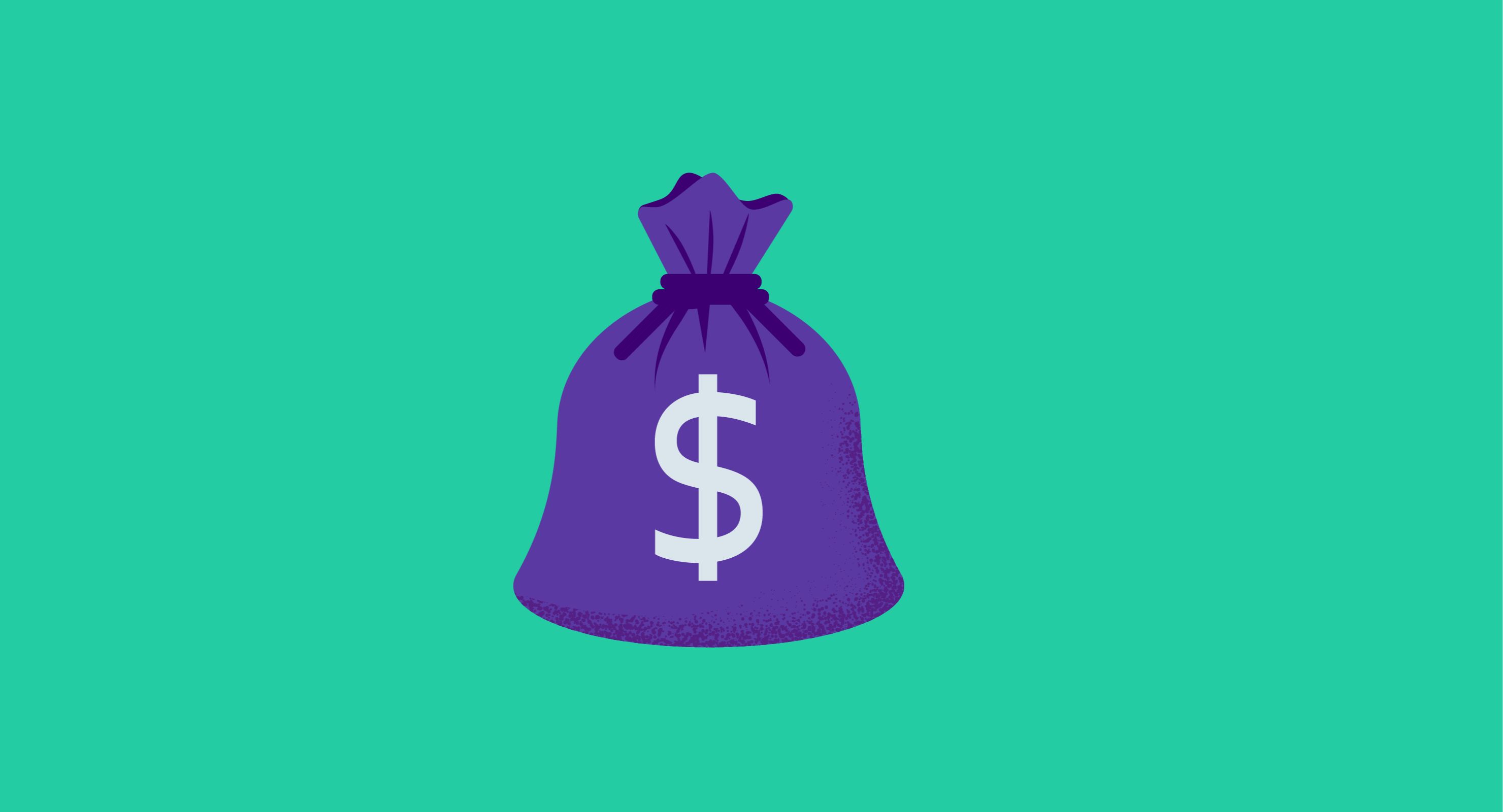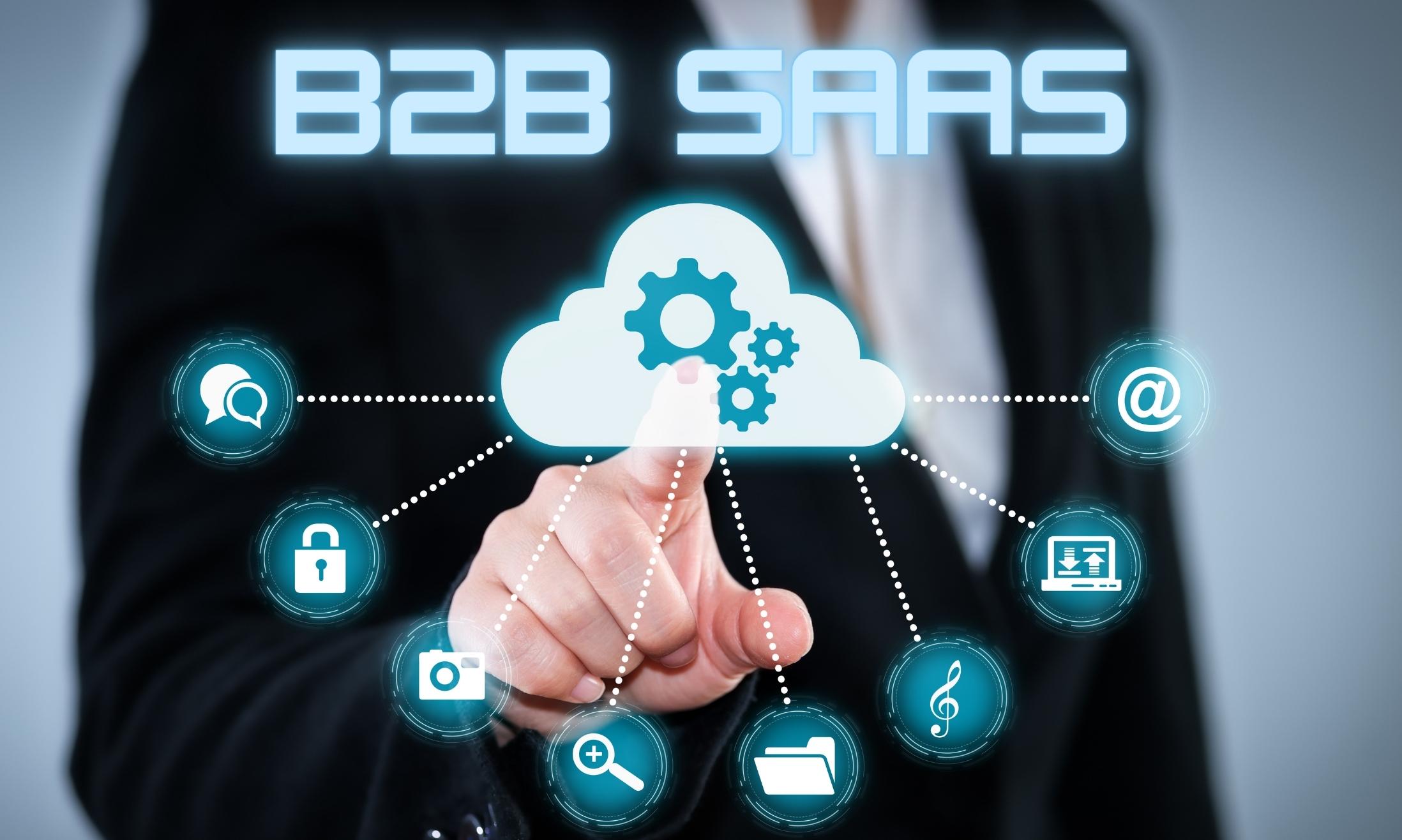Introduction
When it comes to purchasing Software as a Service (SaaS) solutions, it’s important to have a clear understanding of your needs and the available options. SaaS offers a range of benefits, including cost-effectiveness, scalability, and ease of implementation. However, with numerous products on the market, finding the right one for your business can be a daunting task.
In this guide, we will walk you through the essential steps to consider when buying SaaS. From assessing your needs to evaluating features and pricing, we will cover everything you need to make an informed decision. By the end of this article, you will have a solid understanding of how to navigate the SaaS marketplace and select the best solution for your organization’s unique requirements.
Whether you’re a small business owner looking for project management software or an enterprise in need of customer relationship management tools, the process of purchasing SaaS follows a similar path. By following the steps outlined in this guide, you can ensure that you choose a SaaS product that aligns with your goals and objectives, and delivers the functionality and value your business needs to succeed.
Before delving into the evaluation process, it’s important to gain a comprehensive understanding of what SaaS entails. SaaS is a software delivery model where applications are hosted by a third-party provider and made available to customers over the internet. This means that you don’t have to install or maintain the software on your own servers, and instead, can access it through a web browser.
One of the key advantages of SaaS is the lower upfront costs associated with implementation. Unlike traditional software solutions, SaaS typically operates on a subscription-based pricing model, where you pay a regular fee for using the software. This significantly reduces initial investment and allows businesses to allocate resources more efficiently.
In addition, SaaS offers scalability, allowing you to easily accommodate growth. As your business evolves, you can easily add or remove users, upgrade your subscription, or even switch to a different SaaS provider if necessary. This flexibility ensures that your software remains aligned with your changing needs, without the burden of extensive system modifications or migrations.
Furthermore, SaaS solutions are known for their ease of use and quick deployment. Most providers offer user-friendly interfaces and intuitive features, making it simple for employees to adopt the software without requiring extensive training. This results in improved productivity and reduced downtime when transitioning to SaaS.
Now that we’ve established the benefits of SaaS, let’s dive into the specific steps you need to take to ensure a successful SaaS purchase. In the next section, we’ll explore how to assess your needs and define your requirements before starting your SaaS buying journey.
Understanding SaaS
Before diving into the process of purchasing SaaS, it’s crucial to have a solid understanding of what Software as a Service (SaaS) is and how it works. SaaS is a cloud-based software distribution model where applications are hosted by a vendor and accessed by customers over the internet.
Unlike traditional software solutions that require installation and maintenance on local servers, SaaS eliminates the need for hardware infrastructure and provides users with the convenience of accessing software through a web browser. This not only simplifies the deployment process but also allows for remote access, enabling employees to collaborate and work from anywhere with an internet connection.
One of the key benefits of SaaS is its subscription-based pricing model. Rather than purchasing the software outright, users pay a recurring fee to access and utilize the software. This subscription fee typically includes ongoing support, maintenance, and updates, relieving businesses of the burden of managing and upgrading software versions.
SaaS applications are designed to be multi-tenant, meaning that a single instance of the application serves multiple customers. This shared environment enables the vendor to achieve economies of scale, resulting in cost savings that are passed on to customers. It also allows for seamless updates and enhancements, ensuring that all users have access to the latest features and improvements.
Another significant advantage of SaaS is its scalability. As your business grows, you can easily scale up your subscription to accommodate additional users and increased demand. SaaS providers typically offer different pricing tiers or user-based pricing models, allowing you to choose the most suitable plan for your needs. This scalability eliminates the need for significant upfront investment in hardware and software licenses, providing cost-effective flexibility as your organization evolves.
Security is a top priority for any business, and SaaS solutions often provide robust security measures. SaaS vendors invest heavily in security infrastructure and protocols to protect customer data and ensure compliance with industry regulations. By leveraging the expertise of these vendors, businesses can benefit from a higher level of data security and protection than what may be feasible with in-house solutions.
Integration capabilities are another aspect to consider when evaluating SaaS solutions. While many SaaS applications offer comprehensive functionality, it’s essential to ensure that the software integrates seamlessly with your existing systems and tools. Compatibility with other business applications such as CRM, ERP, or project management software can significantly enhance efficiency and productivity.
Understanding the fundamentals of SaaS is crucial before embarking on the buying process. By recognizing the key advantages such as cost-effectiveness, scalability, accessibility, and security, businesses can make informed decisions when evaluating different SaaS options. In the next section, we’ll delve into how to assess your specific needs and requirements to narrow down the best SaaS solution for your organization.
Assessing Your Needs
Before you start researching SaaS products, it’s important to assess your organization’s needs and requirements. This will help you identify the specific features and functionalities you require in a SaaS solution. Taking the time to evaluate your needs upfront will ensure that you choose a product that aligns with your business objectives and provides the necessary capabilities to support your operations.
Begin by analyzing your current workflows and processes. Look for pain points and areas where you feel your existing software or manual methods are falling short. Are there any inefficiencies or bottlenecks that could be addressed by implementing a SaaS solution? Consider the specific tasks or functions that you would like to streamline, automate, or improve through the use of software.
Next, involve key stakeholders from different departments in the assessment process. By gathering input from various teams, you can gain a comprehensive understanding of their specific needs and challenges. This collaborative approach will help ensure that the selected SaaS solution meets the requirements of all relevant departments, rather than only focusing on one area of your organization.
Consider the scalability of the solution. Evaluate whether you need a SaaS product that can grow with your business. This could involve anticipating increases in the number of users, data volumes, or expansion into new markets or regions. Choosing a SaaS solution that can adapt and scale alongside your organization will save you time and effort in the long run.
Don’t forget to consider the technical requirements of your business. Assess the compatibility with existing systems and tools that you rely on, such as CRM, ERP, or productivity suites. Ensure that the SaaS solution integrates seamlessly with your current technology stack to avoid potential disruptions or duplication of efforts.
Another crucial factor to consider is data security and regulatory compliance. Assess the sensitivity of the data that will be stored or processed within the SaaS solution and ensure that the vendor provides adequate security measures to protect your information. Additionally, consider any industry-specific regulations or compliance requirements that your organization needs to adhere to, such as GDPR or HIPAA. Ensure that the SaaS product is compliant with these regulations to avoid any legal or security risks.
Lastly, it’s important to establish a budget for your SaaS purchase. Evaluate your financial capabilities and determine how much you are willing to invest in a SaaS solution. Take into account not only the upfront costs but also the ongoing subscription fees and any additional charges for add-on features or support. Balancing your budget with the features and functionality you require will help you narrow down your options and find the right SaaS product for your organization.
By thoroughly assessing your needs, involving relevant stakeholders, considering scalability and compatibility, evaluating data security and compliance, and establishing a budget, you will be well-equipped to move forward in your search for the perfect SaaS solution. In the next section, we will explore the process of researching and evaluating different SaaS products.
Researching SaaS Products
Once you have assessed your needs and requirements for a SaaS solution, it’s time to start researching the available products in the market. The goal of this phase is to identify potential vendors that offer SaaS solutions that align with your business needs and objectives.
Start by conducting a comprehensive search online. Look for reputable websites, directories, and review platforms that feature SaaS products, such as G2, Capterra, or Software Advice. These platforms allow you to filter and compare different solutions based on categories, features, pricing, and user ratings.
Take the time to read customer reviews and testimonials to gather insights into the experiences of other businesses who have used the SaaS products you are interested in. Pay attention to both positive and negative feedback, as this can help you gain a well-rounded understanding of the vendor’s strengths and weaknesses.
Consider reaching out to your professional network or industry peers to gather recommendations or get firsthand insights on SaaS products they have used or are currently using. Their experiences and recommendations can be invaluable in your decision-making process.
Attend industry conferences, trade shows, or webinars where SaaS vendors often showcase their products. This will give you the opportunity to interact with the vendors directly, ask questions, and gain a deeper understanding of their solutions and how they can address your specific needs.
When researching SaaS products, don’t focus solely on feature lists. Take the time to understand the vendor’s overall vision, values, and roadmap for future enhancements. Look for vendors who invest in research and development and continuously update their products to meet changing market demands.
It’s also important to consider the vendor’s reputation and stability. Look for established companies with a track record of delivering reliable and high-quality products. By choosing a reputable vendor, you can have confidence in their ability to provide ongoing support, updates, and maintenance for their SaaS solution.
Make a shortlist of the SaaS products that stand out based on your research and evaluation. From this list, go into more detail about each product by visiting the vendor’s website. Explore the product documentation, feature descriptions, and any available demos or trial versions. This will help you gain a deeper understanding of how the product works and whether it meets your specific functional requirements.
Keep in mind that during the research phase, it’s important not to rush the decision-making process. Take the time to thoroughly evaluate and compare different SaaS products to ensure that you make an informed decision. In the next section, we will discuss the key factors to consider when evaluating the features and functionality of SaaS solutions.
Evaluating Features and Functionality
Once you have a shortlist of potential SaaS products based on your research, it’s time to evaluate the features and functionality of each solution. This step is crucial in ensuring that the chosen SaaS product meets your specific requirements and enables your organization to achieve its goals. Here are key factors to consider when evaluating features and functionality:
Core Functionality: Begin by evaluating the core features of the SaaS product. Identify the functionalities that are essential for your business and ascertain that the solution provides robust capabilities in those areas. Consider whether the SaaS product can handle your key business processes efficiently and effectively.
User Interface and Ease of Use: Assess the user interface and ease of use of the SaaS product. Look for a clean and intuitive interface that is easy to navigate. Consider the learning curve for your team and ensure that the SaaS solution is user-friendly and requires minimal training for your employees to get up and running quickly.
Customization and Flexibility: Determine the level of customization and flexibility offered by the SaaS product. Assess whether the solution can be tailored to your specific business needs and workflows. Look for features like configurable workflows, custom fields, or the ability to integrate with other applications seamlessly.
Integration Capabilities: Consider the integration capabilities of the SaaS product. Assess whether it can connect with your existing systems, such as CRM, accounting software, or marketing tools. Seamless integration with other applications can enhance productivity and streamline data flow across your organization.
Scalability: Evaluate the scalability of the SaaS solution. Consider whether it can accommodate your organization’s growth and future needs. Look into the vendor’s ability to handle increased data volumes, additional users, and any potential performance issues that may arise as your business expands.
Mobile Compatibility: Determine whether the SaaS product offers mobile compatibility. In today’s mobile-driven world, having access to the software on mobile devices can significantly increase flexibility and productivity for your team. Consider the availability of mobile apps or mobile-responsive web interfaces for essential tasks and management on the go.
Reporting and Analytics: Assess the reporting and analytics capabilities of the SaaS product. Look for robust reporting tools that provide valuable insights and actionable data. The ability to track key performance indicators, generate custom reports, and visualize data can help you make more informed decisions and drive business growth.
Support and Training: Evaluate the level of support and training provided by the vendor. Consider the availability of customer support channels, such as email, phone, or live chat. Look for resources like tutorials, documentation, and training materials that can support your team during implementation and ongoing use of the SaaS solution.
Security and Data Protection: Ensure that the SaaS product prioritizes security and data protection. Evaluate the measures taken by the vendor to safeguard your data, such as encryption, regular backups, and adherence to industry security standards. Look for any certifications or compliance frameworks that the vendor follows, such as ISO 27001 or SOC 2.
By thoroughly evaluating the features and functionality of each SaaS product, you can determine which solution best meets your business requirements. Remember to prioritize the features that are critical to your organization’s success and consider how well the SaaS product aligns with your long-term goals and strategic objectives. In the next section, we will explore the importance of analyzing pricing and cost factors when selecting a SaaS solution.
Analyzing Pricing and Cost
When selecting a SaaS solution, analyzing pricing and cost is a crucial step in your decision-making process. Understanding the pricing structure and associated costs will help you determine the feasibility and return on investment of the SaaS product. Here are key factors to consider when analyzing pricing and cost:
Subscription Model: Determine the subscription model offered by the SaaS vendor. Assess whether they offer different pricing plans or tiers based on features, usage, or number of users. Consider which plan aligns with your organization’s needs and budget.
Monthly or Annual Fees: Evaluate whether the SaaS solution operates on a monthly or annual payment structure. Consider the advantages and disadvantages of each payment frequency and determine which one suits your organization’s financial situation and cash flow most effectively.
Cost-Per-User: If the SaaS product charges per user, calculate the total cost based on your projected number of users. Assess whether the cost per user is within your budget and if it aligns with your plans for future growth and expansion.
Additional Features or Modules: Determine if there are any additional features or modules offered by the SaaS vendor that may incur additional costs. Evaluate the importance and value of these add-ons to your organization and consider whether they are necessary for the successful implementation and utilization of the SaaS solution.
Implementation Fees: Inquire about any implementation fees or setup costs associated with the SaaS solution. Some vendors may charge an initial fee to assist with the onboarding process, configuration, or training. Consider these costs in your overall budgeting process.
Contract Terms and Commitments: Review the contract terms and commitments associated with the SaaS solution. Assess the duration of the contract, any penalties for early termination, and any flexibility for upgrades or downgrades. Ensure that the contract terms align with your organization’s needs and ability to adapt to changing circumstances.
Renewal and Price Increase policies: Understand the vendor’s renewal and price increase policies. Determine whether the vendor automatically renews the contract or if you need to proactively renew it. Also, ascertain whether the vendor has a history of significant price increases and consider the potential impact on your long-term costs.
Free Trials and Demos: Take advantage of free trials or demos offered by the SaaS vendor. This allows you to test the product firsthand and evaluate its suitability for your organization before committing to a purchase. Use this opportunity to assess the value and functionality of the SaaS solution for your specific use case.
Total Cost of Ownership (TCO): Lastly, calculate the total cost of ownership of the SaaS product over the anticipated timeframe. Consider the subscription fees, implementation costs, training expenses, potential integration fees, and any other associated costs. This holistic view will help you assess the financial impact of the SaaS solution on your organization.
By thoroughly analyzing the pricing and cost factors, you can make an informed decision that aligns with your organization’s budget and financial goals. Prioritize transparency and communication with the vendor to ensure that there are no hidden costs or surprises down the road. In the next section, we will discuss the importance of considering integration and scalability when selecting a SaaS solution.
Considering Integration and Scalability
Integration and scalability are two crucial factors to consider when selecting a SaaS solution. Ensuring that the software seamlessly integrates with existing systems and can scale alongside your business growth is essential for maximizing efficiency and future-proofing your investment. Here are key considerations for integration and scalability:
Compatibility with Existing Systems: Assess the compatibility of the SaaS solution with your current systems and tools. Determine if the software can integrate smoothly with your CRM, ERP, project management software, or any other critical applications. A seamless integration allows for a more efficient flow of data and reduces the need for duplicate data entry or manual tasks.
APIs and Developer Support: Look into the availability and functionality of application programming interfaces (APIs) provided by the SaaS vendor. APIs enable developers to connect and interact with the software, allowing for more extensive customization and integration possibilities. Consider the level of developer support offered by the vendor, such as documentation, tutorials, and a developer community, which can facilitate the integration process.
Scalability and Future Growth: Evaluate the scalability of the SaaS solution to meet your organization’s future needs and growth. Consider whether the software can accommodate additional users, increased data volume, or expansion into new markets. Choosing a scalable solution ensures that you can easily adapt and grow without having to switch to a different software platform, saving time and resources in the long run.
Ease of Adding or Removing Users: Assess the ease with which you can add or remove users in the SaaS solution. Determine if there are any limitations or restrictions in terms of user management. The ability to quickly scale your user base without friction is valuable, especially in growing organizations or fast-paced environments where user requirements may change frequently.
Performance and Reliability: Consider the performance and reliability of the SaaS solution. Evaluate the vendor’s uptime guarantees, service-level agreements (SLAs), and track record for maintaining high system availability. A reliable and performant solution ensures that your business operations are not disrupted, and your team can rely on the software to perform critical tasks consistently.
Multi-Location and Multi-Language Support: If your organization operates in multiple locations or serves customers in different languages, consider whether the SaaS solution provides support for these requirements. Ensure that the software can handle different time zones, currencies, and language preferences to meet the needs of your global operations.
Vendor’s Roadmap for Innovation: Gauge the vendor’s commitment to innovation and future development. Research the vendor’s track record in introducing new features and functionalities, and evaluate their product roadmap. A forward-thinking vendor can ensure that their solution evolves with changing market needs and can provide ongoing value to your organization.
Customer Success and Support: Investigate the level of customer success and support offered by the SaaS vendor. Look for a vendor that is invested in your organization’s success and provides comprehensive onboarding, training materials, and ongoing support. Proactive and responsive customer support can be invaluable in addressing integration challenges and ensuring a smooth experience.
By considering integration and scalability factors, you can select a SaaS solution that works seamlessly with your existing systems and can adapt to your organization’s evolving needs. This ensures a smoother implementation process, avoids data silos or rework, and maximizes the long-term value of your investment. In the next section, we will discuss the importance of checking security and compliance measures when choosing a SaaS solution.
Checking Security and Compliance
Ensuring the security and compliance of a SaaS solution is essential to protect your organization’s data and maintain the trust of your stakeholders. When choosing a SaaS product, it’s important to thoroughly evaluate the vendor’s security measures and adherence to regulatory compliance requirements. Here are key considerations for checking security and compliance:
Data Security Measures: Inquire about the security measures implemented by the SaaS vendor. Assess whether they follow industry best practices, such as encryption at rest and in transit, to protect your data from unauthorized access. Look for features like multi-factor authentication and user permission controls to ensure that only authorized individuals can access sensitive information.
Physical and Infrastructure Security: Investigate the physical and infrastructure security measures employed by the SaaS vendor. Determine whether they have robust physical security protocols in place, such as secure data centers and controlled access to server rooms. Additionally, inquire about their backup and disaster recovery procedures to ensure data availability and protection against unforeseen events.
Compliance with Industry Regulations: Understand the specific industry regulations or compliance frameworks that your organization needs to adhere to, such as GDPR, HIPAA, or PCI DSS. Ensure that the SaaS vendor has measures in place to comply with these regulations, such as data protection, privacy, and confidentiality safeguards. Request information about their compliance certifications or audits to confirm their commitment to meeting industry standards.
Vendor’s Security Audits and Assessments: Inquire about the vendor’s internal security audits and assessments. Assess whether they conduct regular security assessments and penetration tests to identify vulnerabilities in their software and infrastructure. Additionally, check if they engage third-party auditors to conduct independent security assessments to provide an unbiased evaluation of their security practices.
Data Ownership and Portability: Clarify the ownership and portability of your data within the SaaS solution. Verify that the vendor acknowledges your ownership rights and provides mechanisms for extracting and transferring your data if you decide to switch to a different solution in the future. Ensure that the vendor does not lock you into their platform, making it difficult to retrieve or migrate your data as needed.
Employee Access Controls and Training: Assess the vendor’s employee access controls and training procedures. Inquire about the measures in place to ensure that only authorized personnel can access your data and systems. Ask if the vendor conducts background checks on their employees and provides regular security awareness training to mitigate risks related to insider threats.
Incident Response and Breach Notification: Understand the vendor’s incident response and breach notification procedures. Inquire about their processes for detecting and responding to security incidents, as well as their notification timeline and procedures for informing customers in the event of a data breach. A prompt and transparent response to security incidents is crucial in maintaining trust and minimizing potential damages.
Vendor’s Reputation and References: Research the vendor’s reputation and seek references from other organizations that have used their SaaS solution. Inquire about their experience with the vendor’s security practices and responsiveness. A vendor with a positive reputation for security and compliance is more likely to prioritize your data protection needs and quickly address any security concerns that may arise.
By thoroughly checking the security and compliance measures of a SaaS vendor, you can select a solution that prioritizes the protection and confidentiality of your data. This ensures that you can confidently entrust your sensitive information to the SaaS platform and mitigate the risks associated with data breaches or unauthorized access. In the next section, we will discuss the importance of reviewing customer support and service level agreements when selecting a SaaS solution.
Reviewing Customer Support and Service Level Agreements
When selecting a SaaS solution, it’s important to consider the level of customer support provided by the vendor and review the Service Level Agreements (SLAs). Robust customer support ensures that you receive timely assistance and resolution in case of any issues or challenges with the software. Here are key considerations for reviewing customer support and SLAs:
Customer Support Channels: Assess the available channels for customer support, such as email, phone, live chat, or a dedicated support portal. Determine if the support channels align with your organization’s preferences and needs. Look for vendors that provide multiple support options to cater to different situations and urgency levels.
Availability and Response Time: Review the vendor’s support availability and response time commitments. Determine if the vendor offers 24/7 support or operates within specific business hours. Inquire about their response time for resolving different types of issues, such as critical problems or general inquiries. Ensure that their support response time aligns with your organization’s requirements.
Escalation Procedures: Understand the escalation procedures in place for complex or unresolved issues. Inquire about the process for escalating support tickets to higher-level support teams or management. This ensures that there is a clear path for addressing critical issues promptly and ensuring minimal disruption to your business operations.
Service Level Agreements (SLAs): Carefully review the terms and conditions outlined in the SLAs provided by the vendor. Pay attention to the stated uptime guarantees, system availability commitments, and response time for support tickets. Ensure that the SLAs align with your organization’s expectations and business requirements.
Support Ticket Management: Evaluate the vendor’s support ticket management system. Inquire about the process for submitting, tracking, and managing support tickets. Look for features such as ticket prioritization, automated status updates, or self-service portals that empower you to manage and track the progress of your support requests effectively.
Client References and Testimonials: Request client references or read testimonials from existing customers. Reach out to these references to gain insights into their experiences with the vendor’s customer support. Inquire about their satisfaction with the vendor’s responsiveness, problem resolution, and overall support experience.
Training and Onboarding: Assess the availability of training and onboarding resources provided by the vendor. Inquire about the availability of training materials, documentation, video tutorials, or live webinars. Ensure that the vendor’s onboarding process supports a smooth implementation and seamless adoption of the SaaS solution by your team.
Vendor’s Reputation and Reviews: Research the vendor’s reputation and read reviews from other organizations that have used their SaaS solution. Look for consistently positive feedback regarding their customer support. A vendor with a strong reputation for exceptional customer service is more likely to prioritize your needs and provide timely and effective support.
Communication and Proactive Updates: Evaluate the vendor’s communication practices and their commitment to proactive updates. Inquire about the frequency and mechanism for receiving product updates, enhancements, security patches, and any upcoming changes to the SaaS solution. Clear and proactive communication keeps you informed and helps you plan accordingly for any changes or updates.
By thoroughly reviewing the customer support provided by the vendor and considering the SLAs, you can ensure that you receive the necessary assistance and have a reliable support system in place. Strong customer support and well-defined SLAs enable you to address issues promptly and maximize the value of your chosen SaaS solution. In the next section, we will discuss how to make the final decision and proceed with the purchase of the SaaS solution.
Making the Decision
After thoroughly assessing your needs, researching SaaS products, evaluating features and functionality, considering integration and scalability, checking security and compliance measures, and reviewing customer support and SLAs, you are now ready to make a decision. Here are key factors to consider when making the final decision:
Alignment with Business Needs: Ensure that the chosen SaaS solution aligns closely with your organization’s needs, goals, and objectives. Consider how well the software fulfills your functional requirements and addresses the pain points that led you to seek a SaaS solution in the first place. Choose a solution that enhances your operations and supports your overall business strategy.
Value for Money: Evaluate the overall value for money the chosen SaaS solution offers. Consider the price in relation to the features, scalability, integration capabilities, and level of support provided by the vendor. Assess how the software’s benefits and cost compare to other options on the market. Choose a solution that provides the best balance of functionality, quality, and cost-effectiveness.
User Adoption and Feedback: Gather input from your team members who will use the SaaS solution. Consider their feedback and willingness to adopt the software. Ensure that the interface is intuitive, user-friendly, and aligned with their workflows. User buy-in and positive feedback are key indicators of a successful implementation and can contribute to higher productivity and user satisfaction.
Vendor Stability and Reputation: Evaluate the stability and reputation of the SaaS vendor. Consider factors such as their financial health, years of operation, customer base, and reviews from other organizations. A trustworthy vendor with a solid reputation provides assurance that they will continue to maintain and support the software over the long term.
Long-Term Scalability and Flexibility: Assess how well the chosen SaaS solution can scale and adapt to your organization’s growth and evolving needs. Choose a solution that can accommodate increased data volumes, additional users, and changing requirements without extensive modifications or disruptions. Flexibility and scalability ensure that the software remains valuable and adaptable throughout your organization’s journey.
Implementation and Onboarding Process: Evaluate the vendor’s implementation and onboarding process. Consider the level of support and resources provided to facilitate a smooth and successful adoption of the software. Assess whether the vendor offers training materials, documentation, and support to help your team effectively transition to the new SaaS solution.
Contractual Terms and SLAs: Review the contractual terms, including any service level agreements, and ensure that they align with your organization’s expectations and requirements. Understand the terms for subscription renewals, termination, and potential price adjustments. Seek clarification for any clauses or conditions that may impact your organization’s ability to use the software effectively.
Future Proofing: Consider the future roadmap of the SaaS solution and the vendor’s commitment to innovation. Determine if the vendor demonstrates a clear vision for the future and regularly introduces updates to enhance the software’s capabilities. Choose a solution that is likely to adapt and remain relevant as technology and market demands evolve.
Feedback from References: Reach out to references provided by the vendor. Inquire about their experience with the software and the vendor’s overall performance. Ask questions about implementation, ongoing support, and satisfaction with the solution. These insights from other organizations can provide valuable perspectives and help validate your decision.
By carefully considering these factors and weighing the various aspects of each SaaS solution, you can make an informed decision that satisfies your organization’s needs and goals. Remember, the chosen SaaS solution should align with your long-term vision and provide the necessary functionality, support, security, and scalability to drive your business forward.
Conclusion
Choosing the right SaaS solution for your organization is a critical decision that can have a significant impact on your business operations and success. By following the steps outlined in this guide, you can navigate the buying process with confidence and select a SaaS solution that aligns with your needs and goals.
Begin by thoroughly assessing your needs and defining your requirements. This will help you understand the specific functionalities and features you require in a SaaS solution. Research the available options, read customer reviews, and gather recommendations to create a shortlist of potential vendors.
Evaluate the features and functionality of each SaaS product, considering factors such as core functionality, user interface, scalability, and integration capabilities. Additionally, analyze the pricing and cost factors, ensuring that the solution fits within your budget and offers good value for money.
Check the security measures and compliance of the SaaS solution, confirming that it meets your data protection and regulatory requirements. Review the vendor’s customer support structure, SLAs, and consider the experiences of other customers to ensure that you receive the necessary assistance in case of any issues or challenges.
Finally, make the decision by considering alignment with business needs, value for money, user adoption, vendor stability, and long-term scalability. Carefully review the contractual terms, implementation process, and future roadmap of the SaaS solution. Seek feedback from references and validate your decision based on their experiences.
By approaching the SaaS buying process systematically and considering these factors, you can select a SaaS solution that empowers your organization, streamlines your operations, and supports your growth objectives. Remember, the decision-making process should involve key stakeholders and align with your long-term vision and goals.
Once you have made the decision, it’s time to proceed with the implementation, onboarding, and integration of the SaaS solution. Work closely with the vendor to ensure a smooth transition and proper training for your team. Regularly assess the performance of the SaaS solution and maintain an open line of communication with the vendor to address any issues that may arise.
Continuously monitor your satisfaction with the SaaS solution and be open to reassessing your needs as your business evolves. Remember that technology and market trends are constantly changing, so periodically reevaluating your SaaS solution can help ensure that it continues to meet your organization’s requirements and remains a valuable asset.
By proactively selecting and managing your SaaS solution, you can drive efficiency, productivity, and growth in your organization, putting you on the path to success in a rapidly changing digital landscape.

























